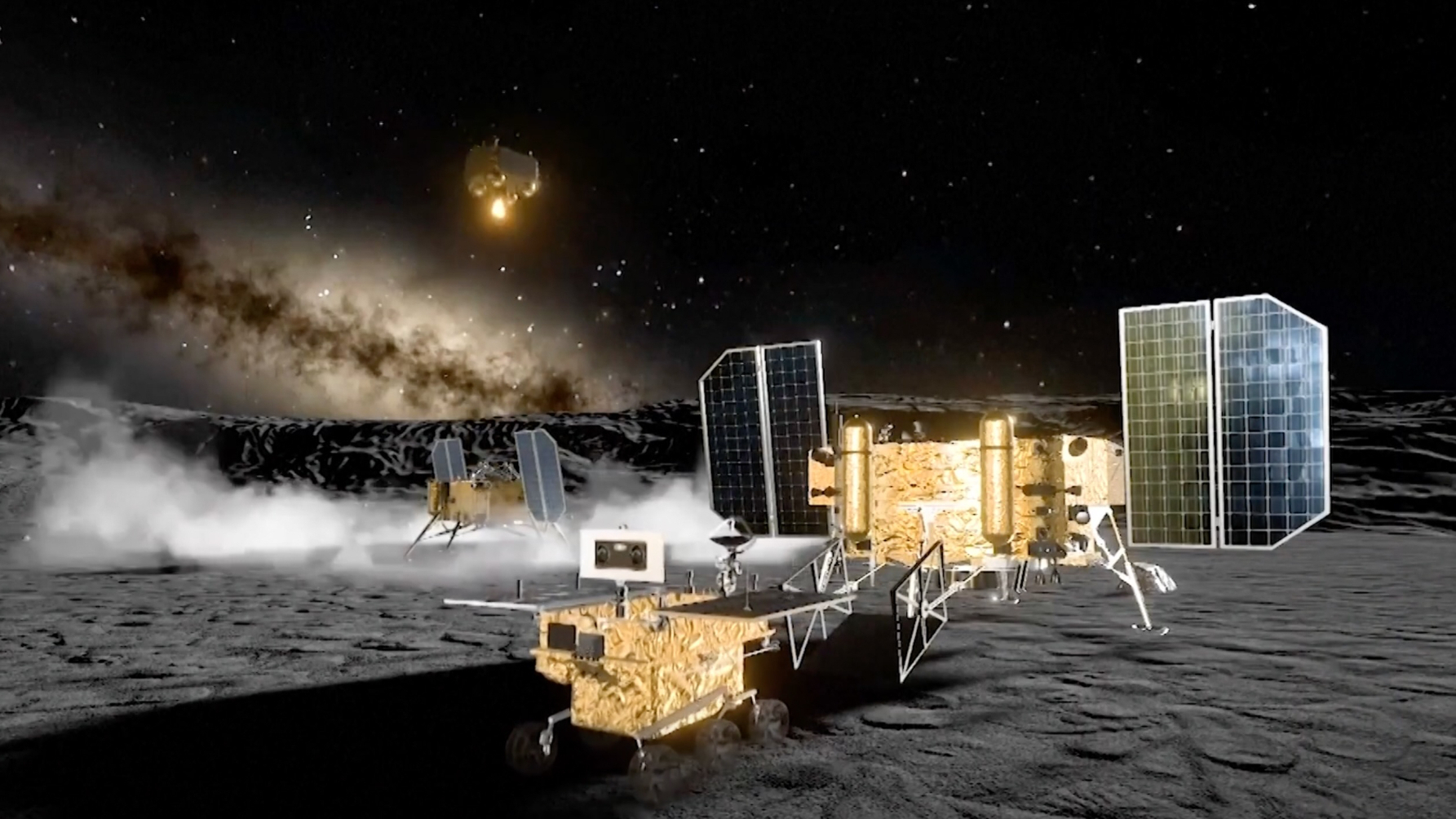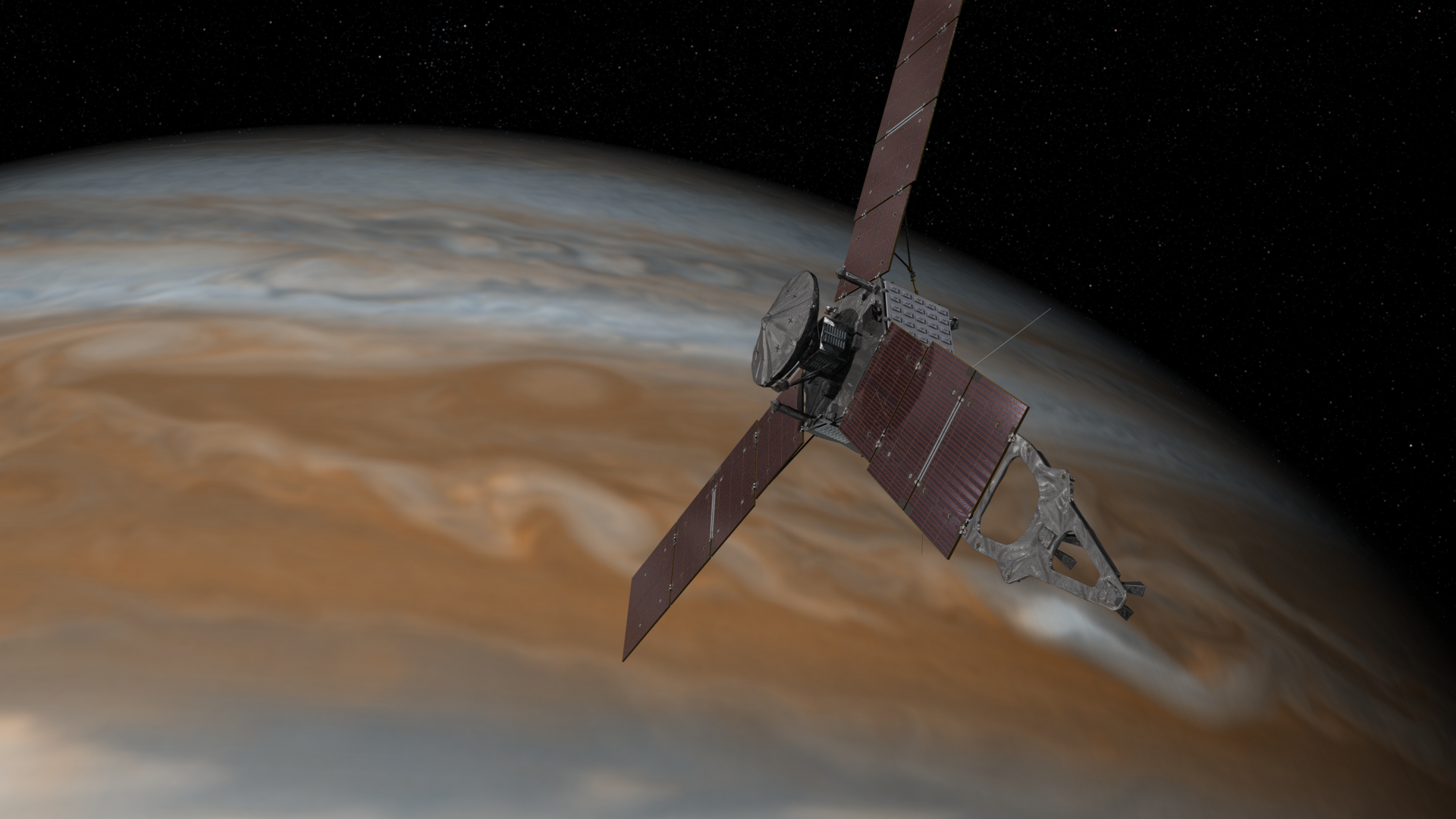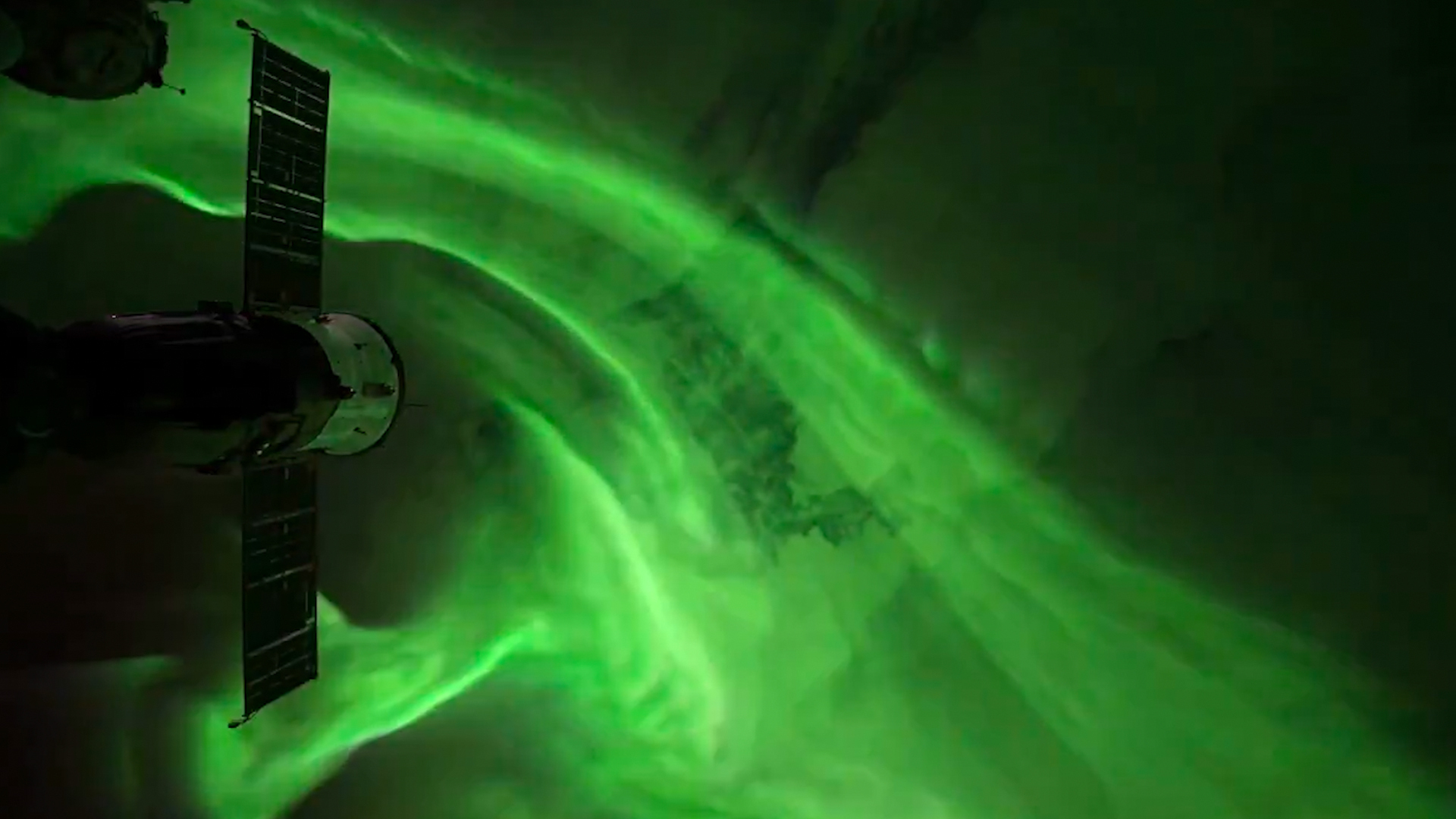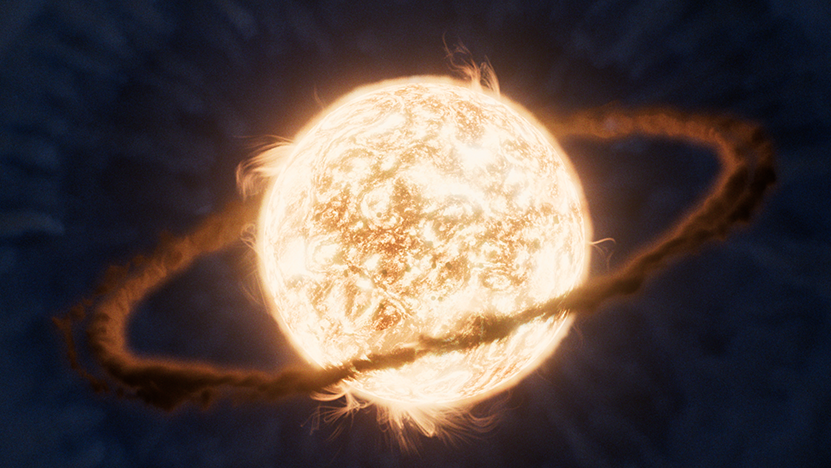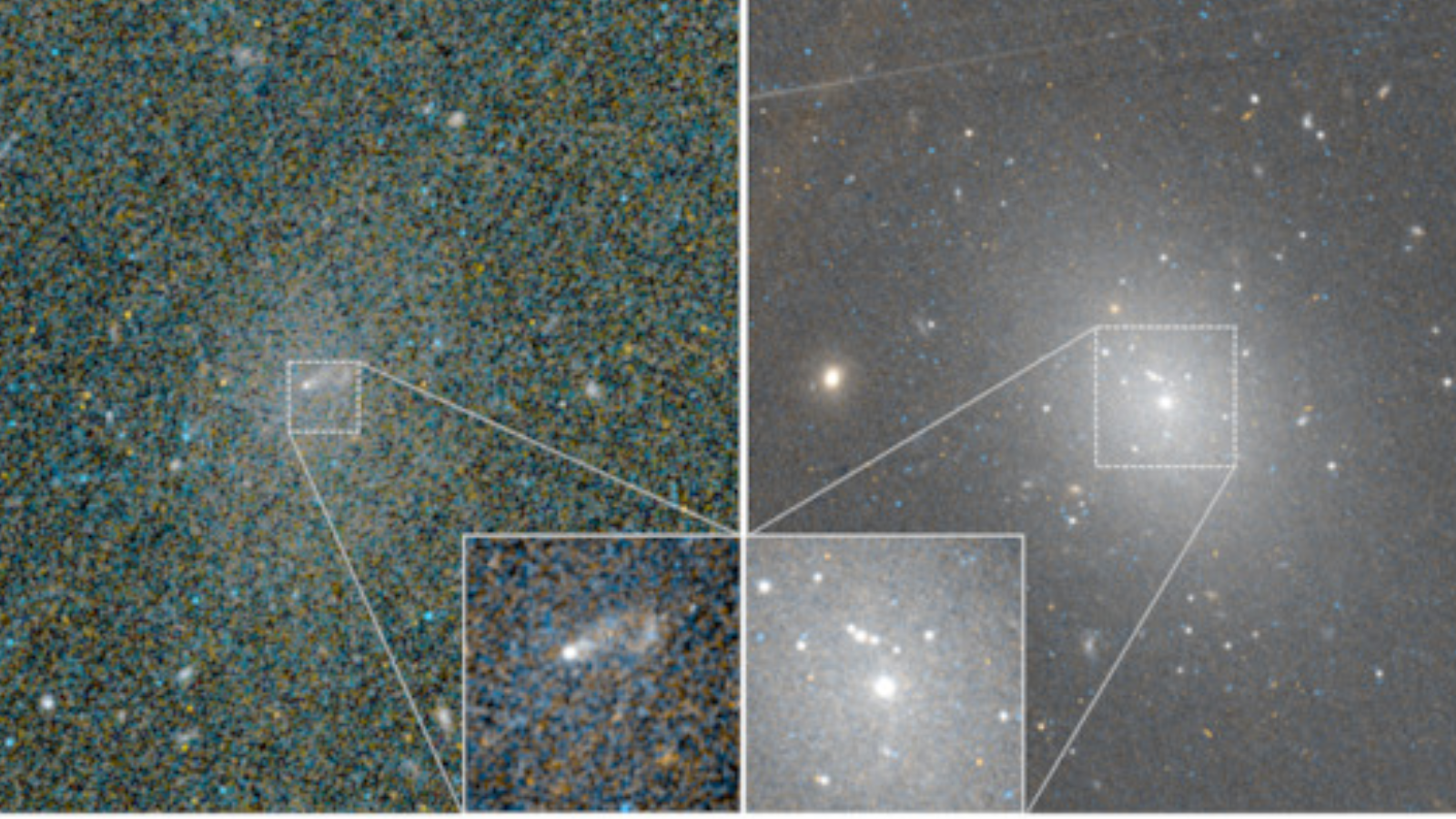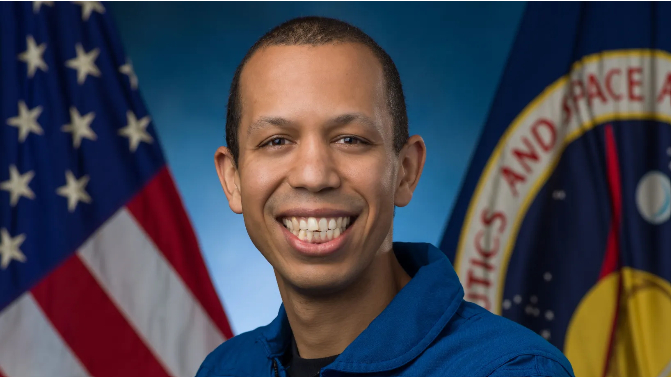Mysterious cosmic lights turn out to be 2 undiscovered supernova remnants
"These two supernova remnants are helping us to better understand the dynamics of our home galaxy’s neighborhood,"
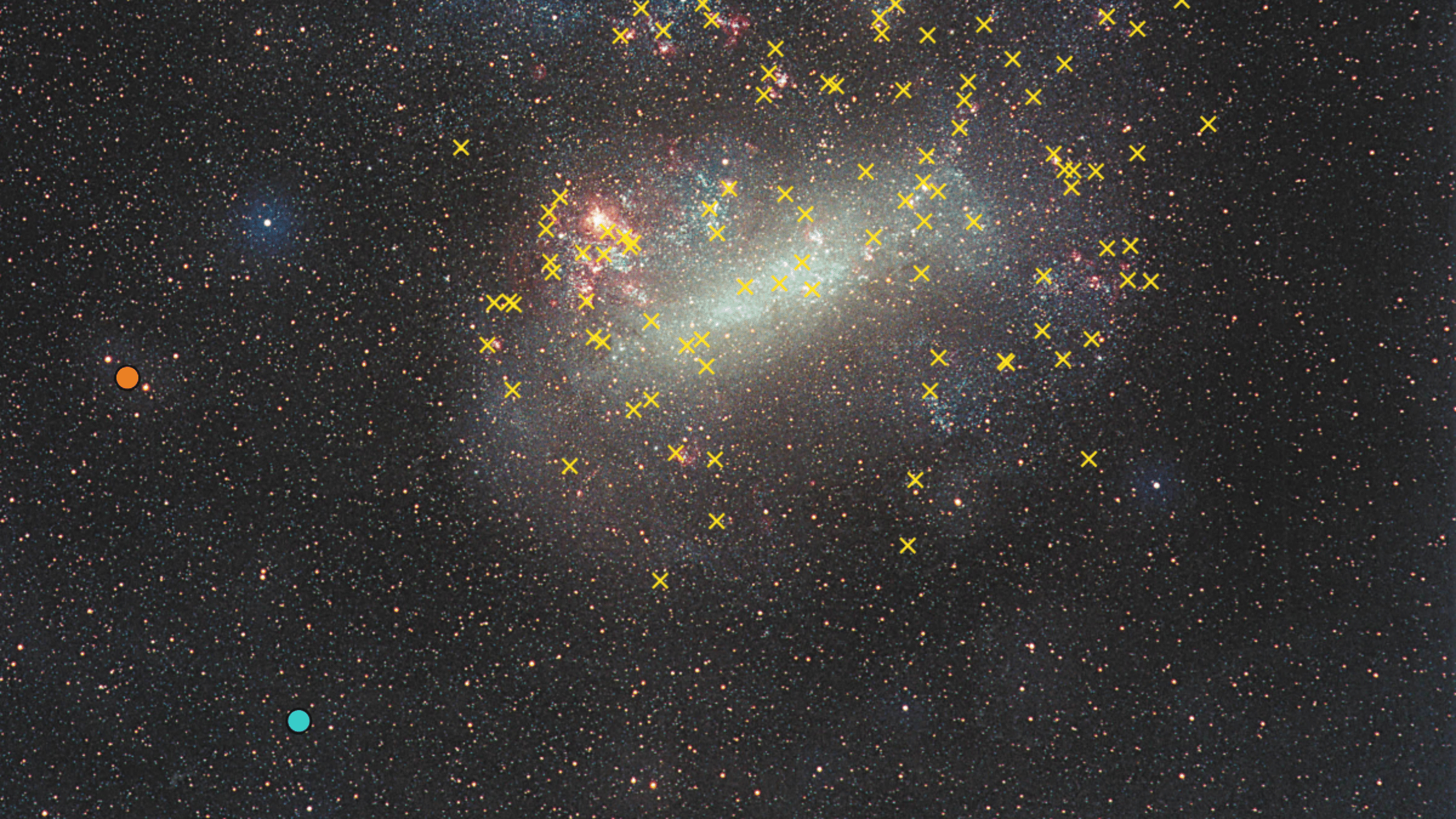
When scientists aimed the European Space Agency's X-ray observatory, XMM-Newton, at two mysterious lights on the outskirts of the Large Magellanic Cloud, they discovered an unexpected source: two previously unknown supernova remnants.
"When a star dies, it can explode in a supernova, causing a strong shock wave and forming an interstellar object called a supernova remnant," wrote an international team of scientists in a paper outlining the discovery.
"Supernovas are important for the matter cycle in galaxies and the formation of the next generations of stars," they continued, "as the shock waves create supernova remnants, which heat and ionize the circumstellar medium or the interstellar medium, sweep up and compress matter, and enrich their environment with chemical elements.”
In a newly released visible-light image from ESA, the remnants appear as two distinct circles in the lower-left corner — J0624-6948 (orange, positioned higher) and J0614-7251 (blue, lower). The yellow crosses mark previously identified supernova remnants.
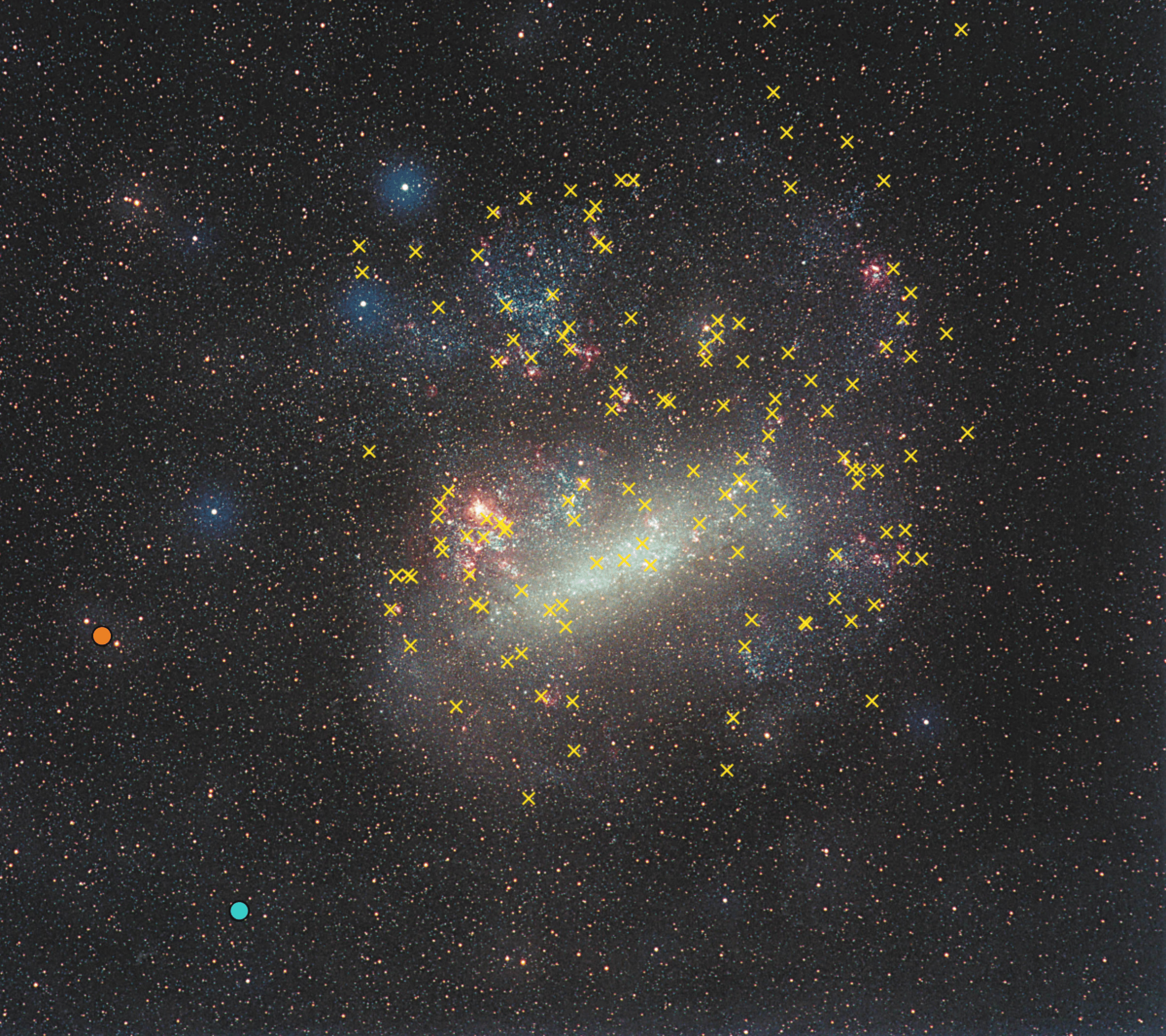
The Large Magellanic Cloud is a dwarf galaxy so close to the Milky Way that it is visible to the naked eye from Earth's Southern Hemisphere. Together with the Small Magellanic Cloud, it is one of the Milky Way's largest satellite galaxies, and one of the few still actively forming stars.
For a supernova to leave behind a remnant, the dying star must be surrounded by ionized gases — conditions typically found in dense, star-forming regions, not in the outer reaches of a galaxy. Ionized gas is typically found in active star-forming regions, where radiation from young, hot stars strips electrons from atoms
This makes the location of J0624-6948 and J0614-7251 particularly unexpected. However, comparisons with other known supernova remnants and theoretical models showed brightness and size match to other confirmed supernova remnants in the Large Magellanic Cloud.
Get the Space.com Newsletter
Breaking space news, the latest updates on rocket launches, skywatching events and more!
"It is surprising that these two sources of light turned out to be supernova remnants, far away from all other echoes of stellar explosions that we knew of before," wrote ESA scientists in a press release.
This suggests that the Large Magellanic Cloud might have a higher concentration of ionized gas than scientists previously thought.
The team speculates that this could be possible due to interactions between the Large Magellanic Cloud, the Milky Way, and the Small Magellanic Cloud, which may be influencing its gas distribution. As these galaxies interact through gravitational forces, they may be pulling, compressing, or even ionizing gas in unexpected ways, which could make the outskirts of the Large Magellanic Cloud more active or turbulent than previously believed, reshaping our understanding of its structure and star-forming potential.
The discovery of supernova remnants in the outskirts of the Large Magellanic Cloud confirms that stellar explosions can happen beyond a galaxy's main body. For the first time, this allows scientists to study these events' shock waves, expelled stellar material, and surrounding environments in a new way.
"In this way, these two supernova remnants are helping us to better understand the dynamics of our home galaxy’s neighborhood," the team concluded.
Join our Space Forums to keep talking space on the latest missions, night sky and more! And if you have a news tip, correction or comment, let us know at: community@space.com.

A chemist turned science writer, Victoria Corless completed her Ph.D. in organic synthesis at the University of Toronto and, ever the cliché, realized lab work was not something she wanted to do for the rest of her days. After dabbling in science writing and a brief stint as a medical writer, Victoria joined Wiley’s Advanced Science News where she works as an editor and writer. On the side, she freelances for various outlets, including Research2Reality and Chemistry World.

